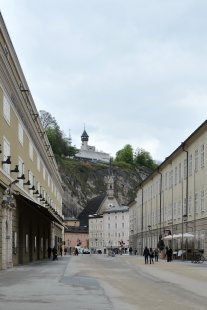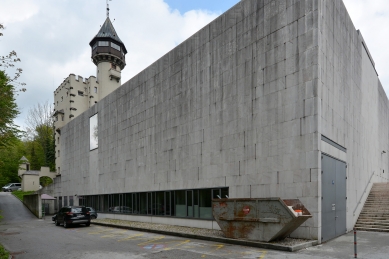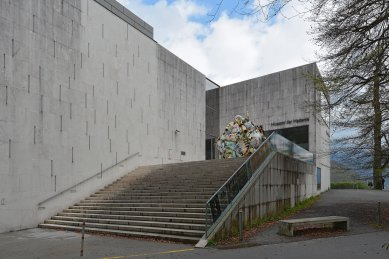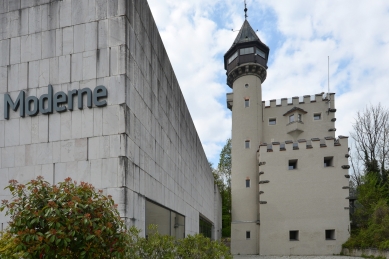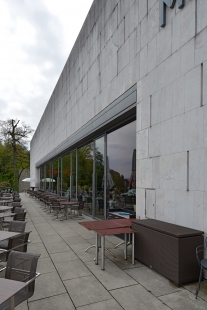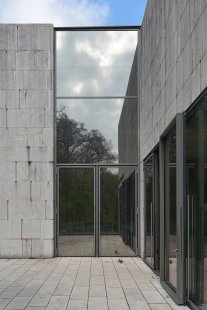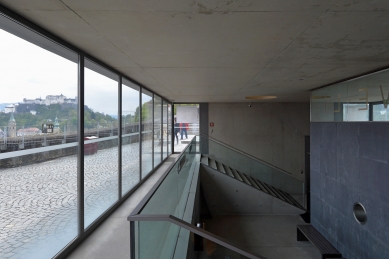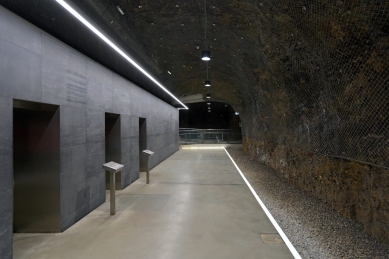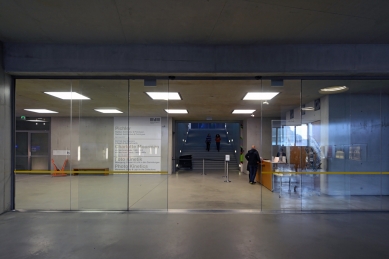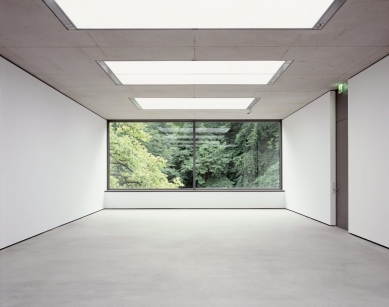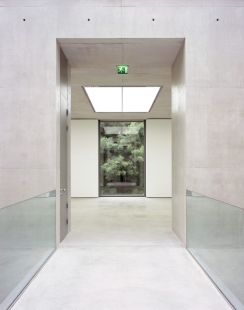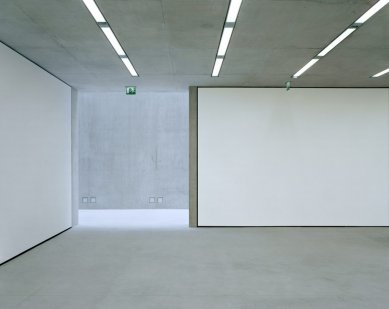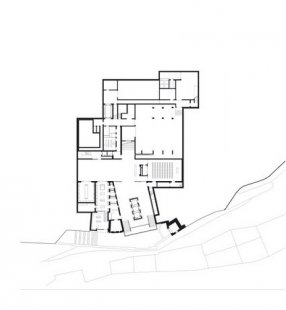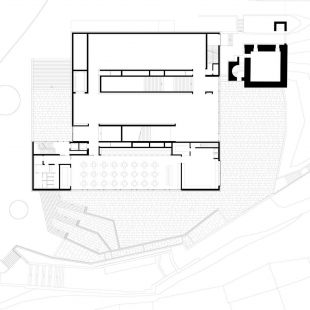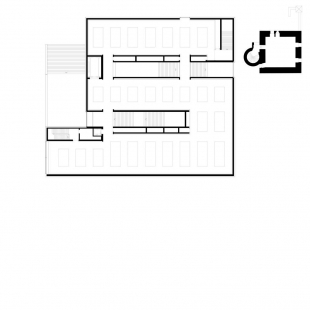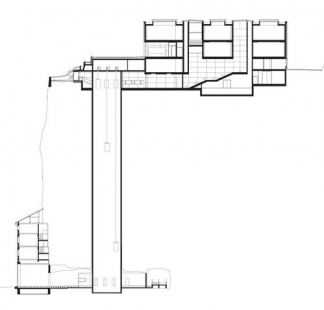
Museum der Moderne
Museum der Moderne Salzburg

Interpretation
The Mönchsberg plateau is full of movement; the hill itself is layered horizontally, with vertical fissures running though it. This structure gave us the idea of conceiving the Museum as a monolithic block, with vertical clefts running through horizontally layered rooms. These cavities cut out of the monolith let daylight into the area of the foyer, the lowest level of the building, thus enabling the visitor to find his bearings by natural light. Analogously with the serpentine sweep of the outside landscape, the route inside the building is arranged in a spiral. The staircases placed in the clefts make the approach to a work of art an experience in which the boundaries of exterior and interior space cancel each other out. The building and its environment are thus perceived as a unity. When the visitor mounts from the foyer to the first exhibition level, the water-tower comes into his field of vision. As he arrives in the daylit top floor, there spreads before him to the south an imposing view of the dense Mönchsberg vegetation. The other views, all derived from the morphology of the building, also promote an affinity with the environment. The wide entrance to the sculpture courtyard also allows a merging of interior and exterior; in the extension of the bridge over the second main staircase, the west window frames a detail of the natural landscape, while the large south window rounds off the tour of the exhibition with a view over to the fortress and the outer fortifications.
Museum
The Museum is the place where the work of art and the viewer come together. It is a place for (re)collection, contemplation and exchange of views. Through the institution »museum«, these elements become ritualised. By accommodating and displaying the work of art, the museum creates a framework for these activities. Like the frame which marks the boundary of a picture, detaching it from the background and enabling the viewer to become absorbed in the work alone, the institution »museum« enhances the aura of the work through the very act of exhibiting it. The motif of the frame recurs at various points in our Museum. Thus the visitor feels a link with the surrounding landscape through framed views, which on the one hand demonstrate the beauty of nature by juxtaposing an »art picture« with a »nature picture«, and on the other allow the eye of the viewer to rest. Framing the view enhances nature itself by directing the focus onto a detail. The frame demands orthogonal viewing, in contradiction to natural perception. This enables a fresh look at what is familiar, and the awareness of this circumstance attunes the viewer to the abstraction of art.
The Mönchsberg plateau is full of movement; the hill itself is layered horizontally, with vertical fissures running though it. This structure gave us the idea of conceiving the Museum as a monolithic block, with vertical clefts running through horizontally layered rooms. These cavities cut out of the monolith let daylight into the area of the foyer, the lowest level of the building, thus enabling the visitor to find his bearings by natural light. Analogously with the serpentine sweep of the outside landscape, the route inside the building is arranged in a spiral. The staircases placed in the clefts make the approach to a work of art an experience in which the boundaries of exterior and interior space cancel each other out. The building and its environment are thus perceived as a unity. When the visitor mounts from the foyer to the first exhibition level, the water-tower comes into his field of vision. As he arrives in the daylit top floor, there spreads before him to the south an imposing view of the dense Mönchsberg vegetation. The other views, all derived from the morphology of the building, also promote an affinity with the environment. The wide entrance to the sculpture courtyard also allows a merging of interior and exterior; in the extension of the bridge over the second main staircase, the west window frames a detail of the natural landscape, while the large south window rounds off the tour of the exhibition with a view over to the fortress and the outer fortifications.
Museum
The Museum is the place where the work of art and the viewer come together. It is a place for (re)collection, contemplation and exchange of views. Through the institution »museum«, these elements become ritualised. By accommodating and displaying the work of art, the museum creates a framework for these activities. Like the frame which marks the boundary of a picture, detaching it from the background and enabling the viewer to become absorbed in the work alone, the institution »museum« enhances the aura of the work through the very act of exhibiting it. The motif of the frame recurs at various points in our Museum. Thus the visitor feels a link with the surrounding landscape through framed views, which on the one hand demonstrate the beauty of nature by juxtaposing an »art picture« with a »nature picture«, and on the other allow the eye of the viewer to rest. Framing the view enhances nature itself by directing the focus onto a detail. The frame demands orthogonal viewing, in contradiction to natural perception. This enables a fresh look at what is familiar, and the awareness of this circumstance attunes the viewer to the abstraction of art.
0 comments
add comment



